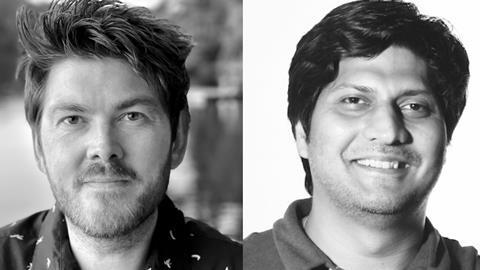Jon Mason and Varun Parange of VFX talent platform Hotspring provide their top tips for setting up a VFX-focused company in 2021
Jon Mason and Varun Parange set up Trace VFX in 2010, and last year established Hotspring, a platform for finding and collaborating with creative talent around the world. Below they explain the challenges of setting up a business in such a competitive sector.
Jon: One of the big misconceptions is that VFX is different from other businesses. It’s not. There are different forces and dynamics that create the conditions within an industry, but every business is fundamentally the same, no matter what you’re selling.
I see a lot of people struggle with why changes are happening in the industry; Why are margins reducing? Why is it getting more commoditised? The answers are relatively straightforward when you look at the forces driving the industry forward. The key is understanding those forces and positioning your business within them in a way which maximises value.
A typical VFX business looks very different now. Back in the day, you had to buy all this expensive infrastructure up-front and park yourself in high rent real estate to get started, but that’s completely gone now.
With the cloud, you can spin up a studio with much less money than it took 10 years ago. It means new companies can enter the market and immediately compete against the big established players. Couple that with an embrace of remote working and suddenly the industry has become much more decentralised. For someone looking to start something new, there’s never been a better time.
Varun: It’s an exciting time given the focus has swung to the talent, away from the people with the money, which is awesome. We’re seeing people leave big companies, start their own studios, become tremendously competitive, and deliver great work. That’s an exciting time for any industry because you see the best work coming out. These flexible, nimble teams that can scale up and down based on demand is what this industry needs right now.
I always say focus on the minimum viable product (MVP). Make something small and let it solve one thing. Test it out with the client, get some feedback, and iterate some more. If you try to build the whole thing from step one, you’ll never get there because technology and the market moves too quickly. By the time you’ve built your big product, the whole market’s changed. Start with something small, get it out there, and then your users will tell you what they need.
Jon: Exactly. This is where a lot of people stall when turning an idea into a business; they think too big. Of course it’s vital to keep an eye on the big picture and know where you’re going, but you also need to be flexible on how you get there. If you focus too much on building the big thing and making it perfect, you’ll get nowhere.
Varun: When you’re first creating your idea, look to yourself, because that’s the cheapest money you can raise – you have all the equity. You also need to be able to convince yourself about the idea, before convincing others. Next is friends and family. Once you’ve tapped the safest places, then you can start looking for investors.
Have concise goals. A lot of companies have multiple mission statements which can get very confusing. Keep it short, concise, and know your north star. For example, at Hotspring we believe that talent is universal but opportunity is not. So our mission is to connect clients to the best talent around the world no matter where they live. Every single aspect of what we do revolves around bringing that to life.
Jon: You should try to find the right people for your business and create roles around them. Getting the right people on board and letting their experience and expertise guide you and the business is the way to go.

Jon Mason (pictured, left) and Varun Parange (pictured, right) are co-owners of VFX talent platform, Hotspring.





























No comments yet